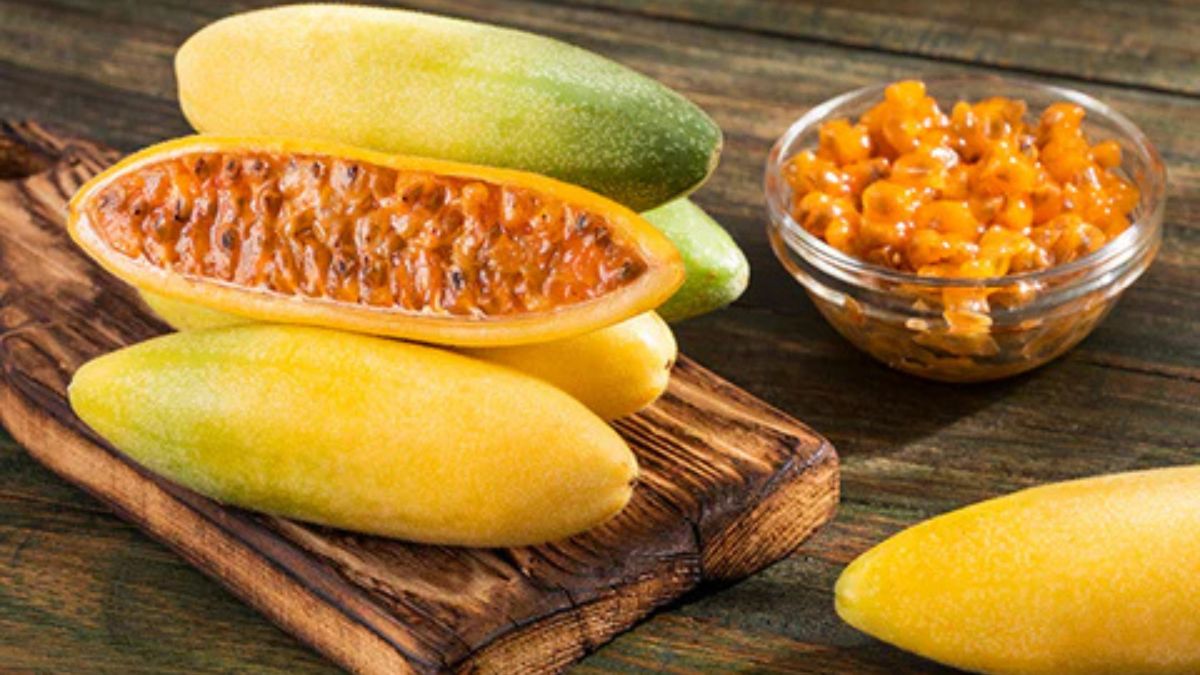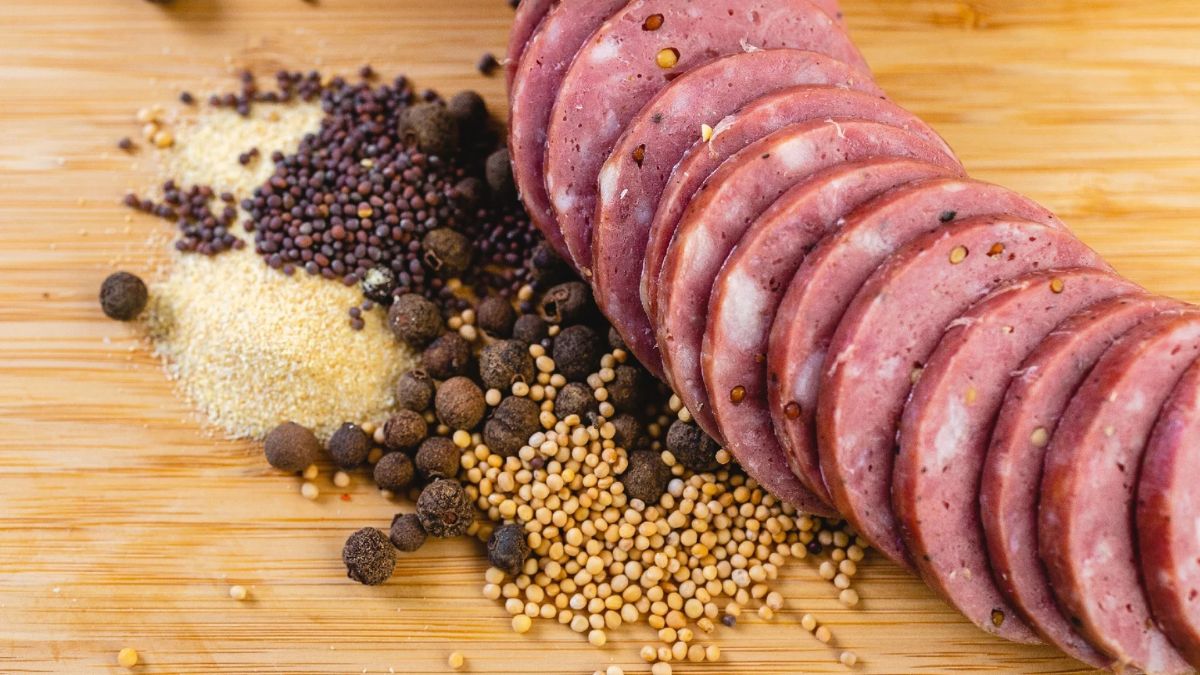FOOD
Toastul: Secrets for a Perfect Slice

Who knew that a simple slice of toast could be elevated to an art form? For those who live by the mantra that bread is life, mastering the perfect slice of toast is the culinary equivalent of a rite of passage. Whether you prefer your toast golden and barely crisp or dark with an extra crunch, understanding the intricacies of toasting can transform your morning routine into a gourmet experience.
In this blog post, we’re pulling back the curtain on the secrets of achieving toast perfection. Toastul is your guide through the deliciously complex world of toasting. We’ll explore techniques, tools, and topping combinations that will leave you wondering how you ever settled for supermarket toast. Get ready to become a toast aficionado!
Why Toast Matters
Toasting may seem like a mundane task, but it has the power to transform your mood and your meal. The right slice of toast can be comforting, invigorating, or simply satisfying. For many, toast is the canvas upon which breakfast dreams are painted. From the moment the aroma hits your nose, you’re transported to a place of warmth and delight. It’s a simple pleasure, yet one that holds immense potential when done correctly.
Even the type of bread you choose can significantly affect your final product. Understanding the nuances between a hearty sourdough and a delicate brioche will inform your toasting technique. Each bread type requires a different approach, and comprehending these differences can elevate your toast from ordinary to extraordinary.
Toastul understands that not all toast is created equal. That’s why we’re here to guide you through the science and art of achieving the perfect slice. Stay tuned as we unpack the essentials for your very own toasting triumph.
Choosing the Right Bread
The foundation of any great slice of toast is, of course, the bread. With countless varieties lining grocery store shelves, making the right choice can feel overwhelming. However, understanding the characteristics of each type can simplify your selection process. Whether you’re opting for a classic white loaf or a health-conscious whole grain, there’s a perfect match for your toasting preferences.
Consider the texture and density of your bread. A dense sourdough might require longer toasting times to achieve an even crispness, while a light, airy ciabatta may char quickly. Recognizing these differences will help you manage your toasting time and temperature effectively.
Don’t forget about flavor! The notes of your bread should complement any toppings you plan to use. A sweet brioche pairs wonderfully with rich butter and jam, while a nutty whole grain might be best suited to avocado and seeds. Selecting the right bread sets the stage for your toasting masterpiece.
The Science of Heat and Time
Perfect toast isn’t just about the bread; it’s also about the interplay of heat and time. Getting this balance right is key to achieving that ideal texture—crispy on the outside, tender on the inside. But what many don’t realize is that toasting is a science, with precise variables that must be controlled.
Your toaster’s settings have a significant impact. A lower heat with a longer duration often ensures even cooking without burning the exterior. Conversely, a quick blast of high heat can produce a heavily toasted crust with a chewy center. Finding the right setting requires a bit of experimentation, but the results are worth it.
Time is another crucial element. Depending on your desired outcome, you may need to adjust the toasting duration. For newbies, a mid-range setting is a safe starting point, allowing you to tweak as needed. Consistency is key, and once you find that sweet spot, your mornings will be forever transformed.
The Perfect Equipment
While a standard toaster can suffice, investing in quality equipment can make a significant difference. Consider the size of your slices and how they fit into your toaster. A wide-slot toaster or even a toaster oven might offer more versatility for artisanal breads, bagels, and thicker cuts.
For those who love precision, some modern toasters come with high-tech features like lift-and-look functions and electronic browning controls. These options allow you to carefully monitor your toast’s progress without interrupting the cooking process. It might sound extravagant, but for toast enthusiasts, these tools can drastically improve the toasting experience.
Don’t underestimate the role of your knife, either! A sharp, serrated blade is essential for slicing through crusty loaves without crushing their delicate interiors. Proper slicing ensures uniform thickness, allowing for even toasting every time.
Toasting Techniques for Every Bread Type
Mastering toast means understanding that different breads demand different techniques. For example, denser loaves like rye or pumpernickel might benefit from a double toast to ensure thorough crispiness. On the other hand, lighter breads such as baguettes or brioche can quickly become overdone and require careful monitoring.
Consider pre-toasting techniques, such as lightly brushing with oil or scoring thick crusts. These small steps can enhance flavor and texture, giving your toast a gourmet edge. Experimentation is encouraged, and Toastul is here to provide guidance as you explore these creative toasting methods.
Remember, practice makes perfect. Don’t be discouraged by early attempts. Each slice is a step towards expertise, and every toast-lover has their own unique approach. With time, patience, and a bit of trial and error, you’ll find the technique that suits your taste.
Toppings that Elevate Your Toast
Now that you’ve perfected your slice, it’s time to think about toppings. While butter and jam are classics, the possibilities are endless. Consider savory options like smashed avocado, poached eggs, or smoked salmon for a luxurious breakfast.
For those with a sweet tooth, ripe bananas with honey, or ricotta and strawberries can turn your toast into a decadent treat. Don’t be afraid to experiment with herbs, spices, and even edible flowers for an artistic touch.
The key is balance. Toppings should complement the flavors of your toasted bread, enhancing rather than overpowering. With our tips, you’ll create toast masterpieces that not only please the palate but also the eyes.
The Role of Texture in Toast Perfection
Texture is a critical component of the perfect slice of toast. It’s about more than just crispiness; it’s about balance. The right texture can transform a simple piece of bread into a culinary delight. Whether you prefer a light crunch or a hearty bite, understanding texture will guide your toasting technique.
Achieve a balanced texture by adjusting your toasting settings. A gentle heat can create a soft, chewy center, while a higher temperature can lead to a crisp, flaky crust. Pay attention to the moisture content of your bread, as this will affect the final texture.
Experiment with adding layers of texture through toppings. A sprinkle of seeds or nuts can add a satisfying crunch, while a drizzle of olive oil can create a silky finish. Texture is a vital element of the toasting experience, enhancing both flavor and aesthetic appeal.
Common Mistakes and How to Avoid Them
Even the most seasoned toast enthusiasts can fall victim to common pitfalls. One frequent mistake is uneven toasting, often due to inconsistent slicing or incorrect settings. Ensure your toaster is preheated and your slices are of uniform thickness for the best results.
Another common issue is burning. While some enjoy a darker toast, burnt bread is universally disliked. To avoid this, monitor your toast closely and adjust settings as needed. Remember, practice makes perfect, and learning from mistakes is part of the process.
Lastly, don’t underestimate the importance of cleaning your toaster regularly. Crumbs can build up and affect performance, leading to uneven results. A clean toaster ensures consistent heat distribution, vital for achieving your desired toast.
Toasting Around the World
Toasting traditions vary across cultures, offering unique perspectives on this beloved breakfast staple. In Italy, bruschetta is a popular choice, featuring toasted bread topped with fresh tomatoes and basil. Meanwhile, in France, the croque monsieur—a toasted ham and cheese sandwich—is a lunchtime favorite.
In the UK, beans on toast is a classic comfort food, while in Sweden, crispbread is often topped with cheese or cured meats. Exploring these international toasting traditions can inspire your own creations and broaden your culinary horizons.
Celebrate these global influences and incorporate them into your toasting repertoire. Toastul believes that the best toast is one that tells a story, connecting you to different cultures and flavors worldwide.
How to Store Bread for Optimal Toasting
Preserving the freshness of your bread is essential for achieving perfect toast. Store your bread in a cool, dry place, ideally in a bread box, to maintain its texture and flavor. Avoid refrigerating bread, as this can lead to staleness and moisture loss.
If you’re not planning to use your bread immediately, consider freezing it. Frozen bread can be kept for months and toasted directly from the freezer, retaining its freshness. This method is particularly useful for artisanal loaves that may not have preservatives.
When it’s time to toast, allow frozen bread to thaw slightly before placing it in the toaster. This will ensure even toasting and help prevent burning. Proper storage ensures every slice is as fresh and delicious as the day you bought it.
Becoming a Toast Master
With the knowledge and techniques shared by Toastul, you’re well on your way to mastering the art of toasting. Remember, the perfect slice is a combination of the right bread, proper equipment, and personal preference. Experiment, have fun, and discover what works best for you.
Apply these insights to transform your morning routine and indulge in the simple pleasure of a well-crafted slice of toast. With each new attempt, you’ll refine your skills and hone your preferences, becoming a true toast master in your own right.
Join the Toastul community to share your creations and learn from fellow toast enthusiasts. Together, we’ll celebrate the artistry and joy of perfecting the humble slice of toast. Your next breakfast awaits—grab your bread, set your toaster, and get ready to enjoy the delicious results.
FOOD
E622 Explained: The Hidden Ingredient in Your Favorite Foods

Have you ever glanced at a food label and wondered what E622 really is? If so, you’re not alone. This mysterious ingredient pops up in many of our favorite snacks and meals, raising eyebrows and questions among health-conscious consumers. Known as sodium glutamate or monosodium glutamate (MSG), it’s often shrouded in controversy. While some people embrace its flavor-enhancing qualities, others are wary of its potential effects on health.
In this blog post, we’ll take a closer look at E622—unpacking its role in the foods we love, exploring the debates surrounding it, and offering tips for navigating your diet if you’re keen to avoid it. Let’s dive into the world of E622!
The Controversy Surrounding E622
E622, also known as sodium glutamate, has sparked heated debates among consumers and health experts alike. While many enjoy its flavor-enhancing properties in various dishes, others raise concerns about its safety.
Some studies suggest a link between E622 and adverse reactions like headaches or allergic responses. This raises questions about how sensitive individuals may react to foods containing this additive.
On the flip side, proponents argue that moderate consumption poses no significant risk. They point out that countless products utilize E622 without issues for most people.
The lack of definitive research leaves room for speculation. As more people become label-conscious, they often question what goes into their food. The controversy surrounding E622 reflects broader discussions on food additives and transparency in the industry.
The Effects of E622 on the Body
E622, also known as sodium glutamate or monosodium glutamate (MSG), is often a topic of debate when it comes to its effects on the body. For many, consuming foods with E622 can lead to an array of reactions.
Some individuals report headaches, sweating, and even nausea after eating meals containing this ingredient. This phenomenon is sometimes referred to as “Chinese Restaurant Syndrome.” While these symptoms may not affect everyone, they are significant for those who do experience them.
On the flip side, E622 can enhance flavor and improve food palatability. Many enjoy its savory taste in dishes ranging from snacks to main courses.
Research continues into how MSG interacts with our bodies over time. Some studies suggest that excessive consumption might impact metabolic health or contribute to obesity but findings remain inconclusive for now.
Common Foods that Contain E622
E622, also known as soy lecithin, is a common ingredient lurking in many processed foods. It’s often used for its emulsifying properties, helping to blend oil and water-based ingredients.
You might find E622 in chocolate products. It helps keep the texture smooth and prevents separation.
Baked goods like cakes and pastries may also contain this additive. Manufacturers appreciate its ability to improve shelf life.
Many salad dressings rely on E622 too. It ensures that oil and vinegar mix seamlessly.
Even some dairy alternatives utilize this ingredient for creaminess and consistency. Look closely at labels when reaching for non-dairy milks or yogurts.
Snack foods aren’t exempt either; potato chips frequently include E622 to enhance flavor and maintain freshness while providing a pleasant mouthfeel.
How to Avoid E622 in Your Diet
Avoiding E622 in your diet can be straightforward with a bit of awareness. Start by reading labels diligently. Ingredients must be listed, and if you see “E622” or “sodium glutamate,” it’s time to rethink that product.
Opt for whole foods whenever possible. Fresh fruits, vegetables, grains, and meats are less likely to contain additives like E622. Cooking at home allows you to control what goes into your meals.
When shopping packaged foods, look for brands that focus on natural ingredients. Many companies pride themselves on transparency regarding what they use.
Consider exploring specialty stores or farmer’s markets for organic products free from artificial additives. These options often steer clear of controversial ingredients like E622.
Educate yourself about common cuisines known for using flavor enhancers and choose alternatives that prioritize health over convenience. Making informed choices puts you in charge of what you consume daily.
Natural Alternatives to E622
If you’re looking to replace E622, several natural alternatives can enhance your meals without the added chemicals.
One popular option is nutritional yeast. It offers a cheesy flavor while being rich in vitamins and minerals.
Another great substitute is miso paste. This fermented soybean product adds depth and umami to dishes, making it perfect for soups and dressings.
For those seeking a thicker texture, arrowroot powder or cornstarch works wonders as a thickening agent in sauces and gravies.
Herbs like basil or oregano can impart flavor without any of the additives found in processed foods. They are versatile enough for various cuisines.
Consider using vegetable stock instead of bouillon cubes that may contain E622. Homemade stocks allow you complete control over ingredients while providing robust flavors to your recipes.
FOOD
Discovering Curuba: The Exotic Fruit You Need to Try

Curuba, a fruit that sounds like it belongs in a tropical paradise, is slowly making waves beyond its native regions. Often overshadowed by more popular fruits, this exotic gem deserves your attention. With its vibrant hue and unique flavor profile, curuba offers not just a tasty treat but also a wealth of nutritional benefits. Curious about where it comes from and how you can incorporate it into your meals? Let’s dive deeper into the delightful world of curuba and discover why this fruit should be on your radar!
Nutritional benefits of Curuba
Curuba, also known as the banana passionfruit, packs a nutritional punch that can enhance any diet. This vibrant fruit is rich in vitamins A and C, which support immune function and skin health.
It’s also high in fiber. Fiber aids digestion and promotes a feeling of fullness, making curuba an excellent choice for weight management.
Moreover, curuba contains antioxidants that combat oxidative stress in the body. These compounds may help reduce inflammation and lower the risk of chronic diseases.
With its low-calorie count, curuba allows you to enjoy a sweet treat without guilt. The combination of nutrients makes it perfect for those seeking both taste and health benefits in their meals or snacks.
How to incorporate Curuba into your diet
Curuba is a versatile fruit that can elevate your meals in many ways. Try adding fresh curuba to your morning smoothie for a tropical twist. Its tangy flavor pairs wonderfully with bananas and spinach.
For breakfast, mix curuba into yogurt or oatmeal. The vibrant color and unique taste will make your dish stand out while offering added nutrition.
Consider using it in salads too. Chopped Aruba adds a refreshing touch alongside leafy greens, nuts, and cheese.
If you’re feeling adventurous, experiment with curuba juice as a base for cocktails or mocktails. It’s an excellent way to impress guests at your next gathering.
Don’t forget about desserts! Curuba can shine in sorbets or ice creams, providing both sweetness and an exotic flair to treat yourself after dinner.
Recipes using Curuba
Curuba is a versatile fruit that can elevate various dishes. Its unique flavor pairs beautifully with both sweet and savory ingredients.
Start your day by adding curuba puree to smoothies. Blend it with bananas, yogurt, and a splash of honey for a refreshing breakfast treat.
Consider using curuba in desserts too. A simple curb sorbet is easy to make—just blend the fruit with sugar and freeze until firm. This bright dessert will impress guests at any gathering.
For something savory, try blending curuba into salad dressings or marinades. It adds an unexpected twist that complements grilled chicken or fish splendidly.
Don’t forget about baking! Use curuba in muffins or pancakes for a delightful change from the ordinary flavors you might be used to. Its tangy sweetness can transform traditional recipes into something special without much effort.
Where to find and buy Curuba
Finding curuba can be an adventure in itself. This exotic fruit is cherished primarily in South America, particularly in Colombia and Ecuador.
Local markets are the best places to discover fresh Aruba. Farmers’ markets often showcase seasonal produce, making it a prime spot for picking up this unique fruit.
If you’re not in South America, fear not! Many specialty grocery stores now stock international fruits like curuba. Some online retailers also offer frozen or dried versions.
When searching online, look for reputable sellers who focus on exotic fruits. They may even provide recipes or tips on how to enjoy Aruba at home.
Remember to check your local health food store too; they might surprise you with their selection of rare goodies from around the world. Happy hunting!
The cultural significance of Curuba in South America
Curuba holds a special place in the hearts of many South Americans. This exotic fruit, also known as banana passionfruit, is deeply rooted in the traditions of countries like Colombia and Ecuador.
In local cultures, curuba is more than just food; it symbolizes warmth and hospitality. Families often serve curuba juice or desserts to guests as a gesture of welcome.
The fruit’s vibrant color reflects its lively cultural significance. Festivals celebrating harvests frequently feature curuba dishes, showcasing its versatility. It brings communities together through shared recipes and culinary experiences.
Indigenous groups have long revered Aruba for its nutritional benefits. They believe it possesses healing properties that contribute to overall well-being.
Even today, you can find artisans crafting jams and sauces from this beloved fruit, preserving age-old techniques passed down through generations. Curuba embodies not only flavor but also rich history across diverse regions in South America.
Conclusion: Why you should give Curuba a try
Curuba is more than just an exotic fruit; it’s a delightful journey for your taste buds. With its unique flavor profile and impressive nutritional benefits, this tropical gem deserves a spot in your diet. The versatility of curuba makes it easy to incorporate into various meals and snacks, adding both taste and health benefits.
Exploring recipes featuring curuba can be a fun culinary adventure. Whether blended into smoothies or used in desserts, the possibilities are endless. Plus, finding Aruba has become simpler as awareness grows about this fantastic fruit.
Beyond its flavors and health perks, curuba carries cultural significance in South America that connects people with their heritage. It’s not just food; it tells stories of tradition and community.
So why hesitate? Embrace the opportunity to try something new. Curuba could very well become one of your favorite fruits!
FOOD
DIY Summer Sausage: Tips and Tricks for Making Your Own at Home

Summer sausage — the name alone conjures images of picnics, backyard barbecues, and gatherings with friends. This savory treat is a beloved staple for charcuterie boards and snack platters alike. But have you ever thought about making your own summer sausage at home? Crafting this flavorful delicacy can be both rewarding and delicious. With just a few ingredients and some basic tools, you can create a version that perfectly suits your taste preferences.
Imagine slicing into a beautifully crafted log of summer sausage that you’ve made yourself. The flavors are bold, the textures perfect, and best of all — it’s uniquely yours. Whether you’re looking to impress guests or simply enjoy a homemade snack during those lazy summer days, diving into the world of DIY summer sausage opens up endless possibilities for creativity in flavor combinations.
Let’s explore how easy it is to make summer sausage at home while enjoying every step of the process!
The Benefits of Making Your Own at Home
Making your own summer sausage at home offers a rewarding experience. You have complete control over the ingredients, allowing you to choose high-quality meats and spices that suit your taste.
Homemade sausages often come without preservatives or artificial additives. This means you’re enjoying a product that’s not only fresher but also healthier for you and your family.
Cost-effectiveness is another compelling reason. Store-bought options can be pricey, while making it yourself can save money in the long run.
Experimentation is key when creating your unique flavors. You can mix herbs, spices, and even different types of meat to craft something truly special that reflects your culinary style.
There’s a sense of pride in crafting something from scratch. Sharing your homemade summer sausage with friends or family adds an extra layer of enjoyment to any gathering.
Necessary Tools and Ingredients
To make delicious summer sausage, you’ll need a few essential tools. A meat grinder is crucial for achieving the right texture. If you don’t have one, consider using pre-ground meats.
A reliable sausage stuffer is also important. This tool helps you fill casings evenly, creating that perfect bite every time.
Don’t forget about your mixing equipment! A large bowl and sturdy spatula are necessary for blending spices and meats thoroughly.
Now, let’s talk ingredients. Start with high-quality pork or beef as your meat base. You’ll want fat content to ensure flavor and juiciness.
Spices like black pepper, garlic powder, and mustard seed will elevate your summer sausage to new heights. Curing salt is vital too; it not only enhances flavor but also preserves the meat safely.
Choose natural hog casings or synthetic alternatives based on preference—both work well for this savory treat.
Step-by-Step Guide to Making Summer Sausage
Start by gathering your ingredients. You’ll need ground meat—beef, pork, or a mix works well. Also grab spices like black pepper, garlic powder, and mustard seed for that classic flavor.
Next, combine the meat and spices in a large bowl. Mix them thoroughly until everything is evenly incorporated. This step is crucial for ensuring each bite bursts with flavor.
Once mixed, pack the mixture into sausage casings tightly. Make sure to eliminate any air pockets as you go along. Twist off sections of the casing to create individual sausages.
Now it’s time to cure the sausage. Place it in a refrigerator overnight to allow those flavors to meld together beautifully.
After curing, smoke or bake your sausages at a low temperature until they reach an internal temperature of 160°F (71°C). This process adds depth and richness that sets homemade summer sausage apart from store-bought varieties.
Tips for Perfecting Your Recipe
To perfect your summer sausage, focus on the meat quality. Choose fresh cuts with a good fat-to-meat ratio for optimal flavor and texture.
Seasoning is key. Experiment with spices like garlic powder, black pepper, or crushed red pepper flakes to find your ideal blend. Don’t shy away from adding mustard seeds or coriander for that extra zing.
Pay attention to the curing process. Letting your sausage rest in the fridge overnight allows flavors to meld beautifully.
Keep an eye on the drying time as well—too long can lead to overly dry sausage while too short may leave it undercooked.
Invest in a reliable smoker or oven thermometer. Consistent temperature control ensures even cooking and helps develop that signature smoky aroma everyone loves.
Creative Variations and Flavor Combinations
Experimenting with flavors can elevate your homemade summer sausage to a whole new level. Think outside the box!
Consider adding different spices, such as smoked paprika or coriander, for a unique twist. Garlic and onion powder also enhance the savory profile beautifully.
Fruits can add an unexpected sweetness. Dried cranberries or apricots complement the rich meat flavors well. For those who love heat, incorporating jalapeños or crushed red pepper flakes brings an exciting kick.
Herbs like rosemary or thyme infuse freshness into every bite. Or try mixing meats—beef combined with pork creates a delightful balance of textures and tastes.
Don’t forget about cheese! Cubes of cheddar or chunks of pepper jack can turn your sausage into something truly indulgent. Each bite becomes a flavorful surprise that keeps friends and family coming back for more.
Storing and Serving Your Homemade Summer Sausage
Storing your homemade summer sausage properly is key to preserving its flavor and texture. Once cooled, wrap each log in butcher paper or vacuum-seal it for best results. This keeps moisture out while allowing the meat to breathe.
Refrigeration is ideal for short-term storage. Your sausage can last up to three weeks when kept at a consistent temperature. For longer preservation, consider freezing individual portions. Just be sure to label them with the date so you know exactly what you have on hand.
When it’s time to serve, slice the sausage thinly for charcuterie boards or thicker for sandwiches. Pair it with cheeses, pickles, and crusty bread for an impressive spread that’s perfect for gatherings or quiet evenings at home.
Don’t forget about garnishing! Fresh herbs or spicy mustard can elevate your presentation and enhance flavors beautifully.
Conclusion: Enjoying the Fruits (or Meats) of Your Labor
After all the careful preparation and attention to detail, there’s nothing quite like enjoying your homemade summer sausage. The satisfaction that comes from crafting it yourself is unmatched. Slice into your masterpiece and savor the unique flavors you’ve created.
Pair it with cheese, crackers, or fruits for a delightful charcuterie board. Use it in sandwiches or as a savory snack on a road trip. The options are endless.
Don’t forget to share your creations with family and friends. They’ll appreciate the effort you’ve put into this delicious treat. Plus, they’ll likely want the recipe themselves!
So gather those ingredients and tools, unleash your creativity in the kitchen, and transform simple meats into something extraordinary. Your tastebuds—and anyone lucky enough to indulge—will be grateful for your efforts!
-

 TECHNOLOGY11 months ago
TECHNOLOGY11 months agoExploring the Benefits of Using Tanzohub for Your Blog
-

 ENTERTAINMENT10 months ago
ENTERTAINMENT10 months agoThe Legendary Career of the Half of a 1990s-2000s Rock Duo with Six Grammys
-

 HEALTH9 months ago
HEALTH9 months agoThe Ultimate Guide to Using Greenheal.net for Holistic Wellness
-

 HEALTH10 months ago
HEALTH10 months agoThe Secret Ingredient for Radiant Skin: All About Oridzin
-

 HEALTH11 months ago
HEALTH11 months agoQxefv: The Ultimate Solution for Stress Relief and Wellness
-

 NEWS9 months ago
NEWS9 months ago5 Fascinating Facts About Mgj Doppy Tlae That Will Blow Your Mind
-

 ENTERTAINMENT7 months ago
ENTERTAINMENT7 months agonhentai 455058: The Ultimate Guide to Understanding this Fan-Favorite Manga
-

 NEWS11 months ago
NEWS11 months agoUnlocking the Potential of SSIS 816 in Data Integration
